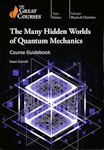Where are we?
Who are we?
Do our beliefs, hopes and dreams hold any significance out there in the void?
Can human purpose and meaning ever fit into a scientific worldview?
Acclaimed award-winning author Sean Carroll brings his extraordinary intellect to bear on the
realms of knowledge, the laws of nature and the most profound questions about life, death
and our place in it all. In a dazzlingly unique presentation, Carroll takes us through the
scientific revolution’s avalanche of discoveries,
from Darwin and Einstein to the origins of life,
consciousness and the universe itself. Delving into the way the world works at the quantum,
cosmic and human levels, he reveals how human values relate to scientific reality.
An extraordinary synthesis of cosmos-sprawling science and profound thought,
The Big Picture is Carroll’s quest to explain our world.
Destined to sit alongside the works of our greatest thinkers,
from Stephen Hawking and Carl Sagan to Daniel Dennett and E. O. Wilson, this book shows that
while our lives may be forever dwarfed by the immensity of the universe, they can be
redeemed by our capacity to comprehend it and give it meaning.
In this ambitious work,
Carroll covers an enormous range: fundamental physics, cosmology, epistemology,
complexity, consciousness, morality.
He shows how (our best current understanding of) fundamental physics
allows no room for any ghosts in the machine.
He explains the philosophical position of “poetic naturalism”,
and how it can be used to tell (well-founded, scientific) “stories”
about the emergent macro-world that don’t need to reduce everything to quantum physics,
but how this necessarily means we have to omit certain aspects when telling these stories.
And he introduces Bayesian reason as a technique for improving understanding at all levels.
This is a bold endeavour, cramming much profound material into 50 chapters,
each less than 10 pages, but adding up to over 400 pages of fascinating material.
He has interesting insights on a wide range of topics,
not just his own speciality of quantum physics,
but also epistemology, emergence, complexity, and more.
It is a deeply humanistic account,
yet grounded in the cold hard light of the constraints of physical reality.










